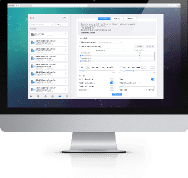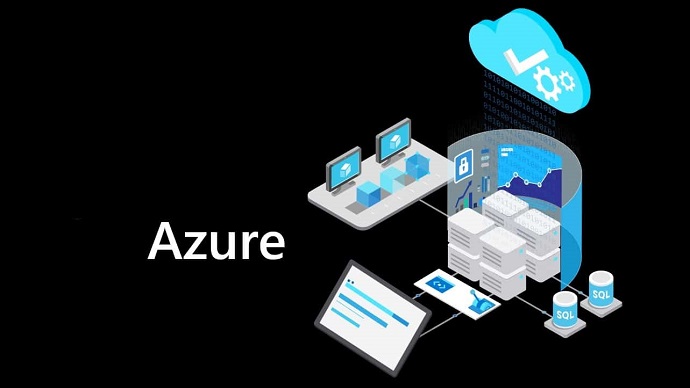Use VCE Exam Simulator to open VCE files

Associate Data Practitioner Google Practice Test Questions and Exam Dumps
Your company is building a near real-time streaming pipeline to process JSON telemetry data from small appliances. The data consists of telemetry messages that are published to a Pub/Sub topic. Your task is to process these messages by capitalizing letters in the serial number field and then writing the results to BigQuery. The goal is to use a managed service while minimizing the amount of custom code needed for the underlying transformations. What is the best solution to achieve this?
A. Use a Pub/Sub to BigQuery subscription, write results directly to BigQuery, and schedule a transformation query to run every five minutes.
B. Use a Pub/Sub to Cloud Storage subscription, write a Cloud Run service that is triggered when objects arrive in the bucket, performs the transformations, and writes the results to BigQuery.
C. Use the “Pub/Sub to BigQuery” Dataflow template with a UDF, and write the results to BigQuery.
D. Use a Pub/Sub push subscription, write a Cloud Run service that accepts the messages, performs the transformations, and writes the results to BigQuery.
C. Use the “Pub/Sub to BigQuery” Dataflow template with a UDF, and write the results to BigQuery.
When building a near real-time streaming pipeline, the objective is to use a managed service to minimize the effort needed to implement custom code. Additionally, the solution must be capable of processing messages in real-time and writing the transformed data directly to BigQuery.
Option A (Pub/Sub to BigQuery subscription with a scheduled transformation query) is not ideal. While this setup allows data to be directly ingested into BigQuery, the transformation of the serial number field would not happen in real-time. Instead, you would have to schedule periodic queries to capitalize the serial numbers. This solution is not ideal for real-time processing and adds complexity.
Option B (Pub/Sub to Cloud Storage with a Cloud Run service) introduces more complexity and overhead. In this scenario, you would write the data from Pub/Sub to Cloud Storage, trigger a Cloud Run service when data arrives, and perform the transformations manually. This approach involves unnecessary intermediate storage (Cloud Storage), requires managing Cloud Run services, and adds more code for transformation and data ingestion to BigQuery. It is not as streamlined or efficient as using a fully managed service for data processing.
Option C is the best solution. Using the “Pub/Sub to BigQuery” Dataflow template allows for near real-time processing of streaming data. Dataflow is a fully managed service that can handle transformations with minimal setup. By using a User Defined Function (UDF), you can apply a simple transformation to capitalize the serial number field as part of the data pipeline. The results are written directly to BigQuery without needing additional services or complex code.
Option D (Pub/Sub push subscription with Cloud Run) also requires custom code to handle message processing and data transformation. While this solution is feasible, it is more complex and less optimized than using Dataflow, which is specifically designed for such streaming data transformations.
In summary, Option C leverages a fully managed service designed for streaming data processing with minimal custom code, ensuring real-time transformation and direct writing to BigQuery.
You need to process and load a daily sales CSV file stored in Cloud Storage into BigQuery for downstream reporting. The data requires transformation before it can be loaded into BigQuery. Additionally, you want to gain insights into any potential data quality issues during this process. The goal is to quickly build a scalable data pipeline. What is the most suitable solution for this task?
A. Create a batch pipeline in Cloud Data Fusion by using a Cloud Storage source and a BigQuery sink.
B. Load the CSV file as a table in BigQuery, and use scheduled queries to run SQL transformation scripts.
C. Load the CSV file as a table in BigQuery. Create a batch pipeline in Cloud Data Fusion by using a BigQuery source and sink.
D. Create a batch pipeline in Dataflow by using the Cloud Storage CSV file to BigQuery batch template.
A. Create a batch pipeline in Cloud Data Fusion by using a Cloud Storage source and a BigQuery sink.
To address the requirements of processing a daily sales CSV file, performing transformations, and ensuring that data quality issues are identified and addressed, a scalable and efficient solution is necessary. Here's why each option is evaluated:
Option A is the best solution. Cloud Data Fusion is a fully managed, scalable data integration service that allows for the creation of batch data pipelines with minimal effort. You can easily ingest data from Cloud Storage (where your CSV file is stored) and use a BigQuery sink to load the transformed data into BigQuery. Cloud Data Fusion also provides the capability to monitor and log data quality issues. It offers a user-friendly interface for building and managing pipelines, which makes it a suitable choice for this task.
Cloud Data Fusion supports transformation tasks like filtering, aggregation, and enrichment with minimal code and can handle large volumes of data. Additionally, the pipeline provides easy tracking of data quality, which is crucial for identifying and resolving potential data issues before loading into BigQuery.
Option B (loading the CSV into BigQuery and using scheduled queries for transformations) involves loading the raw data into BigQuery first, and then running SQL transformation scripts via scheduled queries. While this approach can work for simple transformations, it is less flexible and scalable compared to a fully managed pipeline solution like Cloud Data Fusion. It also doesn't provide the same level of visibility into data quality during the pipeline execution.
Option C (loading the CSV into BigQuery and then creating a batch pipeline in Cloud Data Fusion using BigQuery as the source and sink) is unnecessary. The goal is to process the data from Cloud Storage to BigQuery, so there’s no need to first load it into BigQuery before using Cloud Data Fusion. This introduces an unnecessary extra step.
Option D (using a Dataflow template for Cloud Storage to BigQuery) is a possible solution but requires more customization compared to Cloud Data Fusion. Dataflow is powerful for complex stream or batch processing, but it generally requires more setup and maintenance, particularly when tracking data quality issues and transformations.
In summary, Option A provides a quick, scalable, and low-code solution using Cloud Data Fusion, making it the best choice for loading and transforming your sales CSV file into BigQuery while addressing data quality concerns.
You manage a Cloud Storage bucket that holds temporary files generated during data processing. These files are only needed for seven days, after which they should be deleted to reduce storage costs and maintain bucket organization. What is the most efficient way to automatically delete files older than seven days in Cloud Storage?
A. Set up a Cloud Scheduler job that invokes a weekly Cloud Run function to delete files older than seven days.
B. Configure a Cloud Storage lifecycle rule that automatically deletes objects older than seven days.
C. Develop a batch process using Dataflow that runs weekly and deletes files based on their age.
D. Create a Cloud Run function that runs daily and deletes files older than seven days.
B. Configure a Cloud Storage lifecycle rule that automatically deletes objects older than seven days.
When managing temporary data in Cloud Storage, especially when dealing with files that have a fixed lifespan (like the seven-day data retention in this scenario), it's crucial to automate the deletion process to minimize storage costs and prevent manual intervention. Let's evaluate the available options:
Option B (Configure a Cloud Storage lifecycle rule that automatically deletes objects older than seven days) is the best and most efficient solution. Cloud Storage offers a built-in feature known as lifecycle rules that automatically manage the retention of objects based on specified conditions, such as their age. By setting up a lifecycle rule for your bucket, you can ensure that objects are automatically deleted once they are seven days old, without any manual intervention or additional infrastructure. This solution is highly scalable, efficient, and cost-effective because it operates entirely within Cloud Storage, requiring no external services or custom code.
Lifecycle rules also provide flexibility. For example, you can apply additional conditions, like transitioning objects to cheaper storage classes (e.g., Nearline or Coldline) before deletion, or setting up other retention policies like deletion after a specific date. These rules are automatically enforced, so they guarantee that expired files are removed without any further action.
Option A (Set up a Cloud Scheduler job that invokes a weekly Cloud Run function) introduces unnecessary complexity. While Cloud Scheduler and Cloud Run can automate tasks, this approach requires additional infrastructure (Cloud Run and a custom function) to check and delete files. This method also runs only on a schedule (weekly in this case), meaning files might persist longer than necessary before deletion.
Option C (Develop a batch process using Dataflow that runs weekly) is another complex solution. Dataflow is designed for data processing and stream processing tasks, not for simple file management. While it is powerful, using Dataflow to delete files based on their age is overkill for this task. It would require custom code, setup, and ongoing maintenance.
Option D (Create a Cloud Run function that runs daily) also involves unnecessary complexity. While Cloud Run can be used to run scheduled functions, this still requires you to manage infrastructure (Cloud Run and the function), and the function would need to check each file’s age, which is less efficient than using lifecycle rules that natively handle these scenarios.
Option B is the most efficient, straightforward, and cost-effective solution. Cloud Storage lifecycle rules are specifically designed to automate object retention and deletion, providing a simple and scalable way to delete files older than seven days, ensuring minimal operational overhead.
You work for a healthcare company that manages a large on-premises data system containing patient records with personally identifiable information (PII), such as names, addresses, and medical diagnoses. Before ingesting this data into Google Cloud, you need a standardized and managed solution that can de-identify the PII across all your data feeds. What is the most suitable approach to achieve this?
A. Use Cloud Run functions to create a serverless data cleaning pipeline. Store the cleaned data in BigQuery.
B. Use Cloud Data Fusion to transform the data. Store the cleaned data in BigQuery.
C. Load the data into BigQuery, and inspect the data by using SQL queries. Use Dataflow to transform the data and remove any errors.
D. Use Apache Beam to read the data and perform the necessary cleaning and transformation operations. Store the cleaned data in BigQuery.
B. Use Cloud Data Fusion to transform the data. Store the cleaned data in BigQuery.
Handling personally identifiable information (PII) in the healthcare industry requires special attention to ensure data privacy and compliance with regulations like HIPAA. To address this, the data must be de-identified before ingestion into Google Cloud. Here’s a breakdown of the best solution and why it is suitable:
Option B is the most suitable solution. Cloud Data Fusion is a fully managed, scalable data integration service that provides a user-friendly interface for designing and managing ETL (Extract, Transform, Load) pipelines. It can easily handle the transformation of large datasets and ensure that de-identification procedures are applied consistently across all incoming data feeds. Cloud Data Fusion supports built-in connectors for various data sources and destinations, such as BigQuery, and provides a wide array of transformation capabilities, including custom transformations for PII removal or anonymization.
Data transformation tasks, such as redacting or hashing PII, can be done efficiently in Data Fusion, and the cleaned data can be directly stored in BigQuery for further analysis and reporting. This approach ensures that the solution is standardized, easy to maintain, and compliant with healthcare privacy regulations.
Option A (using Cloud Run functions to create a serverless data cleaning pipeline) is a feasible option but less optimal. While Cloud Run offers serverless execution of containers, using it for a data cleaning pipeline requires writing and managing custom code. This could involve handling multiple data formats, cleaning steps, and orchestrating data flow manually, which adds complexity compared to a fully managed solution like Cloud Data Fusion. Also, Cloud Run is better suited for event-driven applications, not complex, large-scale data transformations.
Option C (loading data into BigQuery and inspecting it with SQL queries) introduces more manual intervention and doesn’t address de-identifying PII before ingestion. Using SQL queries in BigQuery to inspect data is reactive and inefficient. Data should be cleaned and transformed before it is loaded into BigQuery, as this is not only more efficient but also ensures sensitive data is protected at all times.
Option D (using Apache Beam) involves more manual setup and requires familiarity with the Apache Beam programming model. While Apache Beam is a powerful framework for data processing and transformation, it requires custom development, and setting it up may be more complex compared to using a managed service like Cloud Data Fusion. Additionally, Beam requires you to manage the infrastructure or run it via Dataflow, adding overhead for managing pipelines.
In conclusion, Option B provides the simplest, most efficient, and managed solution to de-identify PII, transform the data, and store it in BigQuery. Cloud Data Fusion offers built-in data transformation capabilities with minimal coding, is easy to scale, and integrates well with Google Cloud storage and processing services, making it the best choice for this task.
You manage a large dataset stored in Cloud Storage, which includes raw data, processed data, and backups. Due to strict compliance regulations, certain data types must be immutable for specified retention periods. Additionally, you need an efficient way to reduce storage costs while ensuring your storage strategy aligns with the retention and immutability requirements. What is the most effective approach to achieve this?
A. Configure lifecycle management rules to transition objects to appropriate storage classes based on access patterns. Set up Object Versioning for all objects to meet immutability requirements.
B. Move objects to different storage classes based on their age and access patterns. Use Cloud Key Management Service (Cloud KMS) to encrypt specific objects with customer-managed encryption keys (CMEK) to meet immutability requirements.
C. Create a Cloud Run function to periodically check object metadata, and move objects to the appropriate storage class based on age and access patterns. Use object holds to enforce immutability for specific objects.
D. Use object holds to enforce immutability for specific objects, and configure lifecycle management rules to transition objects to appropriate storage classes based on age and access patterns.
D. Use object holds to enforce immutability for specific objects, and configure lifecycle management rules to transition objects to appropriate storage classes based on age and access patterns.
In your scenario, you're managing a large amount of data stored in Cloud Storage, and compliance regulations require that specific data types must be immutable for certain retention periods. At the same time, you need to efficiently reduce storage costs while ensuring compliance with these regulations. The best solution involves both enforcing immutability and using lifecycle management to optimize storage costs.
Option D is the best solution because it combines two critical aspects:
Object Holds for Immutability: Google Cloud Storage provides a feature called object holds that prevents data from being deleted or overwritten for a specified retention period. This ensures that your data remains immutable, meeting compliance requirements. You can use retention policies to enforce immutability and prevent accidental deletion or modification of critical data types.
Lifecycle Management Rules: Cloud Storage offers lifecycle management policies that allow you to automatically transition objects to different storage classes based on age, access patterns, or other criteria. For example, you can move older or infrequently accessed data to lower-cost storage classes (like Nearline or Coldline) while keeping your more recent or frequently accessed data in Standard storage. This helps reduce storage costs without compromising on data availability.
This approach ensures that compliance requirements for immutability are met while also minimizing storage costs by leveraging Cloud Storage’s lifecycle policies.
Option A (using Object Versioning for immutability and lifecycle management for storage class transitions) is less suitable because Object Versioning does not inherently enforce immutability for retention periods. It allows multiple versions of an object to exist but doesn’t prevent deletions or changes to a specific version in the way that object holds do.
Option B (using Cloud KMS encryption with customer-managed encryption keys) addresses encryption and security but does not directly handle immutability or retention requirements. While Cloud KMS helps ensure data privacy and control over encryption, it doesn't enforce immutability or manage storage costs.
Option C (using a Cloud Run function to periodically check metadata and move objects) introduces unnecessary complexity and maintenance overhead. Although it allows you to move objects based on metadata, it requires building custom infrastructure (e.g., Cloud Run functions) to enforce immutability. This is less efficient compared to using Cloud Storage’s built-in features like object holds and lifecycle management.
In summary, Option D provides the most comprehensive and efficient solution by combining object holds for immutability and lifecycle management rules for cost optimization, making it the best choice to meet both compliance and storage cost objectives.
You work for an eCommerce company that has a BigQuery dataset containing customer purchase history, demographics, and website interactions. Your goal is to build a machine learning (ML) model to predict which customers are most likely to make a purchase in the next month. Given that you have limited engineering resources and need to minimize the level of ML expertise required for the solution, what is the best approach?
A. Use BigQuery ML to create a logistic regression model for purchase prediction.
B. Use Vertex AI Workbench to develop a custom model for purchase prediction.
C. Use Colab Enterprise to develop a custom model for purchase prediction.
D. Export the data to Cloud Storage and use AutoML Tables to build a classification model for purchase prediction.
A. Use BigQuery ML to create a logistic regression model for purchase prediction.
When developing machine learning models with limited engineering resources and ML expertise, it's essential to choose a solution that is easy to use, cost-effective, and well-integrated with your existing data infrastructure. Here’s a detailed explanation of why Option A is the best choice and why the other options are less optimal:
Option A: Use BigQuery ML to create a logistic regression model for purchase prediction.
BigQuery ML is the most suitable choice because it allows you to build and deploy machine learning models directly within BigQuery using SQL. BigQuery is already hosting your customer data, so using BigQuery ML simplifies the process of data extraction and model training, eliminating the need for complex data transfers. BigQuery ML supports a variety of machine learning algorithms, including logistic regression, which is ideal for binary classification tasks like predicting whether a customer will make a purchase. It requires minimal ML expertise as you can leverage SQL queries to create, train, and evaluate the model. This makes it highly accessible for teams with limited ML experience. Furthermore, BigQuery ML scales automatically, allowing you to work with large datasets efficiently.
Option B: Use Vertex AI Workbench to develop a custom model for purchase prediction.
While Vertex AI Workbench offers powerful capabilities for custom ML model development, it requires more in-depth ML knowledge and involves more complex infrastructure. You would need to develop, train, and deploy a custom model, which can be time-consuming and requires significant expertise in ML frameworks like TensorFlow or PyTorch. Since your organization has limited engineering resources and ML expertise, this approach is more resource-intensive compared to BigQuery ML.
Option C: Use Colab Enterprise to develop a custom model for purchase prediction.
Google Colab is a great tool for experimentation, but Colab Enterprise involves a lot of manual work for setting up and managing ML pipelines. It requires knowledge of coding and custom model building, which can be a challenge for teams with limited ML expertise. Like Vertex AI, it is better suited for advanced users or teams that are comfortable working with custom models and external libraries.
Option D: Export the data to Cloud Storage and use AutoML Tables to build a classification model for purchase prediction.
While AutoML Tables is a powerful tool for automating model building, it requires exporting the data to Cloud Storage and may incur additional costs. In this case, the process of exporting data and managing it outside BigQuery adds unnecessary complexity and overhead. Additionally, while AutoML Tables is easy to use, it may not be as seamless or cost-effective as directly using BigQuery ML when your data is already stored in BigQuery.
Option A is the best approach because it allows you to directly build and train a machine learning model within BigQuery using SQL, minimizing complexity and expertise required. This solution leverages the existing infrastructure, is cost-effective, and is well-suited for teams with limited ML experience.
You are designing a data processing pipeline where files arrive in Cloud Storage by 3:00 AM each day. The pipeline processes the data in stages, with each stage depending on the output of the previous one. Some stages take a long time to process, and occasionally, a stage fails. Once an error is detected, you need to address the problem and continue processing as quickly as possible. What is the best approach to ensure the final output is generated as quickly as possible while efficiently handling errors?
A. Design a Spark program that runs under Dataproc. Code the program to wait for user input when an error is detected. Rerun the last action after correcting any stage output data errors.
B. Design the pipeline as a set of PTransforms in Dataflow. Restart the pipeline after correcting any stage output data errors.
C. Design the workflow as a Cloud Workflow instance. Code the workflow to jump to a given stage based on an input parameter. Rerun the workflow after correcting any stage output data errors.
D. Design the processing as a directed acyclic graph (DAG) in Cloud Composer. Clear the state of the failed task after correcting any stage output data errors.
D. Design the processing as a directed acyclic graph (DAG) in Cloud Composer. Clear the state of the failed task after correcting any stage output data errors.
In this scenario, you need a solution that allows you to process data in stages while being able to handle failures efficiently and resume the pipeline as quickly as possible. Here’s a detailed analysis of each option:
Option D: Design the processing as a directed acyclic graph (DAG) in Cloud Composer. Clear the state of the failed task after correcting any stage output data errors.
This is the most suitable approach because Cloud Composer is based on Apache Airflow, which allows you to design workflows as Directed Acyclic Graphs (DAGs). DAGs are ideal for managing complex workflows with multiple stages that depend on each other. If a task fails, you can easily clear its state and restart only the failed task or any tasks downstream of it after the issue has been addressed. Cloud Composer provides built-in error handling and retry capabilities, ensuring the workflow can continue processing without starting from scratch. This solution minimizes downtime and ensures that the pipeline runs efficiently even in the event of a failure.
Option A: Design a Spark program that runs under Dataproc. Code the program to wait for user input when an error is detected. Rerun the last action after correcting any stage output data errors.
While Dataproc can handle big data processing with Spark, this option involves manual intervention, which is less efficient for automated pipelines. Waiting for user input and rerunning tasks is not an ideal approach when trying to minimize the time to generate the final output. This method is prone to human error and delays.
Option B: Design the pipeline as a set of PTransforms in Dataflow. Restart the pipeline after correcting any stage output data errors.
Dataflow is a powerful tool for stream and batch processing, and while it offers automatic error handling and retries, restarting the entire pipeline can be inefficient, especially when only a specific task failed. Restarting the entire pipeline will lead to unnecessary delays and reprocessing of the entire dataset, making it less optimal for ensuring the fastest possible output.
Option C: Design the workflow as a Cloud Workflow instance. Code the workflow to jump to a given stage based on an input parameter. Rerun the workflow after correcting any stage output data errors.
Cloud Workflows is a serverless orchestration tool, and while it can manage the flow of tasks, it's not as suited for complex, dependent pipelines where tasks fail and need to be restarted individually. It lacks the native capabilities of DAG-based systems (like Cloud Composer) to efficiently manage retries and task dependencies, making it a less effective choice for complex data processing workflows.
Option D is the best approach because it leverages Cloud Composer’s DAG-based workflow orchestration, which allows for efficient error handling, task retries, and the ability to continue processing without re-running the entire pipeline. This approach ensures the quickest resolution of failures and the fastest generation of the final output.
Another team in your organization needs access to a BigQuery dataset. You want to share the dataset with the team while minimizing the risk of unauthorized copying of the data. Additionally, you want to create a reusable framework in case you need to share the data with other teams in the future. What is the most effective and secure approach?
A. Create authorized views in the team’s Google Cloud project that is only accessible by the team.
B. Create a private exchange using Analytics Hub with data egress restrictions, and grant access to the team members.
C. Enable domain-restricted sharing on the project. Grant the team members the BigQuery Data Viewer IAM role on the dataset.
D. Export the dataset to a Cloud Storage bucket in the team’s Google Cloud project that is only accessible by the team.
A. Create authorized views in the team’s Google Cloud project that is only accessible by the team.
When sharing data within an organization, especially when the data contains sensitive or valuable information, security and control are paramount. You want to grant access to specific users while minimizing the risk of unauthorized data copying. The best solution also includes a reusable framework for sharing data in the future. Here's a breakdown of the options and why Option A is the best choice:
Option A: Create authorized views in the team’s Google Cloud project that is only accessible by the team.
This is the most secure and controlled approach. Authorized views in BigQuery allow you to share a subset of a dataset without granting full access to the underlying data. By creating views, you can define the exact data that the team can access, preventing them from downloading the entire dataset. Moreover, authorized views are only accessible to specific users or service accounts in the designated project, ensuring that the data cannot be easily copied or exported to unauthorized locations. This approach is scalable and reusable, as you can create similar views for different teams in the future without needing to modify the original dataset. It’s also simple to manage and audit, as access can be controlled via IAM roles and policies.
Option B: Create a private exchange using Analytics Hub with data egress restrictions, and grant access to the team members.
While Analytics Hub is a good tool for data sharing, especially across organizations or projects, it might be overkill for simple internal sharing within a single organization. Analytics Hub allows sharing data across projects, and the data egress restrictions can prevent data from being copied outside of the specified destination. However, setting up Analytics Hub can be more complex and is not the most efficient approach if you are only sharing data with one team within your organization. It also adds an additional layer of management, which might not be necessary if you only need to share access to a BigQuery dataset.
Option C: Enable domain-restricted sharing on the project. Grant the team members the BigQuery Data Viewer IAM role on the dataset.
This option would restrict access to users within your organization's domain, but it does not fully minimize the risk of unauthorized copying. Granting the BigQuery Data Viewer IAM role provides read-only access to the dataset, but it still allows users to download or export the entire dataset. This could lead to the data being copied or transferred to unauthorized locations. Furthermore, this method doesn’t offer fine-grained control over which parts of the dataset the team can access, making it less secure than using authorized views.
Option D: Export the dataset to a Cloud Storage bucket in the team’s Google Cloud project that is only accessible by the team.
Exporting data to a Cloud Storage bucket is a more manual approach that involves copying data to a separate location, which increases the risk of unauthorized access or distribution. By exporting the dataset, you are making an additional copy of the data, which is harder to manage and audit compared to directly sharing access to the BigQuery dataset. This option also lacks the scalability and reuse you would get with authorized views.
Option A is the best approach because it allows for secure and controlled access to the BigQuery dataset using authorized views. This method minimizes the risk of unauthorized copying of data, allows you to define which parts of the dataset can be accessed, and provides a scalable, reusable framework for sharing data with other teams in the future.
Related Exams

Top Training Courses











SPECIAL OFFER: GET 10% OFF
This is ONE TIME OFFER

A confirmation link will be sent to this email address to verify your login. *We value your privacy. We will not rent or sell your email address.
Download Free Demo of VCE Exam Simulator
Experience Avanset VCE Exam Simulator for yourself.
Simply submit your e-mail address below to get started with our interactive software demo of your free trial.